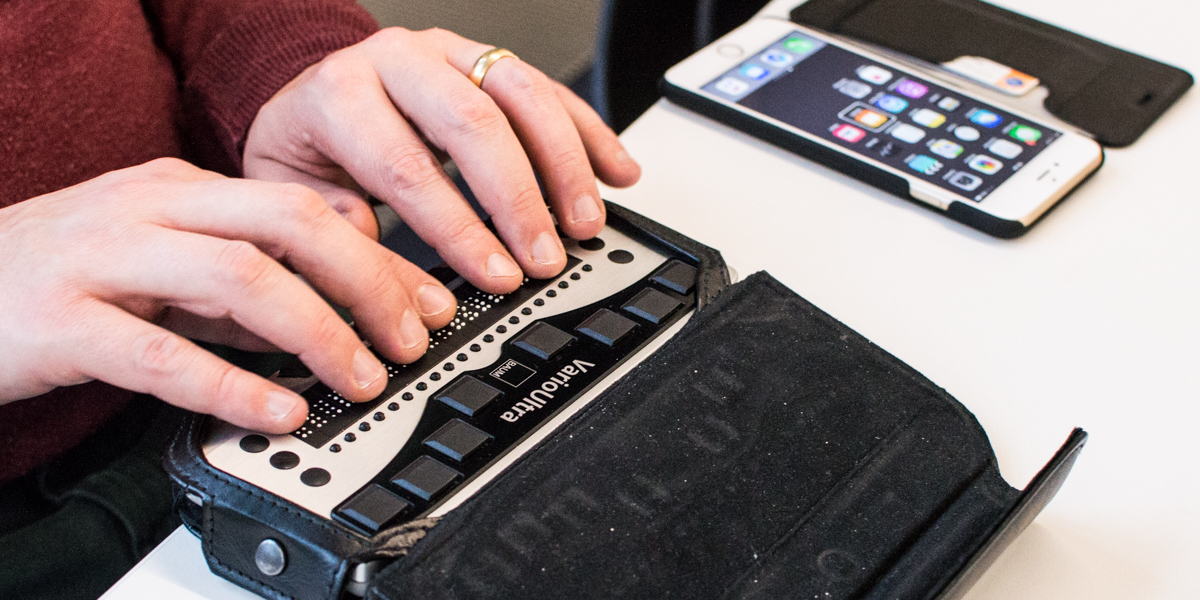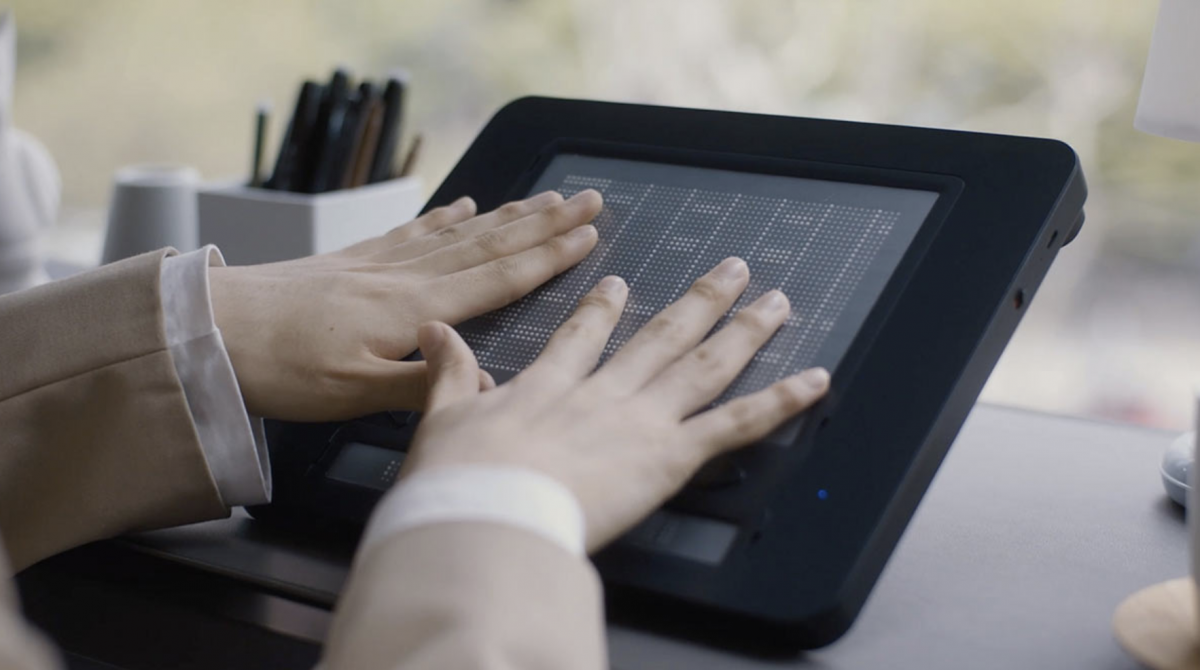Speech-to-Text Devices for Low Vision: Closing the Communication Gap
Empowering Independence With Assistive Innovation for the Blind
The assimilation of assistive technology right into the lives of individuals with visual impairments represents a considerable development in promoting independence and self-sufficiency. From cutting-edge screen viewers to innovative wise canes, these tools not just boost daily navigating and interaction yet likewise empower users to involve meaningfully in different facets of life. As we check out the myriad benefits and real-world applications of these technologies, it becomes important to examine the underlying elements that add to their efficiency and the capacity for future growths in this crucial area.
Overview of Assistive Technology

The advancement of assistive modern technology is grounded in concepts of inclusivity and empowerment. Technologies in software program, equipment, and sensory improvements provide users with options tailored to their certain requirements. From screen visitors that transform text to speech, to tactile gadgets that communicate details via touch, these devices change the way individuals engage with their surroundings.
Along with sensible applications, assistive technology fosters greater social inclusion and engagement in numerous fields, including education and learning and work (Screen readers for the blind). As r & d continue to develop, the potential for assistive innovation to additionally boost the lives of aesthetically impaired people continues to be appealing, paving the way for a much more fair society where every person can flourish
Kinds Of Assistive Devices
A variety of assistive gadgets have arised to sustain people with aesthetic impairments, each developed to satisfy particular needs and boost day-to-day performance. These tools vary from low-tech remedies to state-of-the-art innovations, offering diverse alternatives for customers.
Low-tech gadgets consist of magnifiers and large-print products that assist in analysis and writing. Braille tools, such as Braille styluses and slates, make it possible for responsive analysis and communication. Positioning and wheelchair help, like white walking canes, aid users navigate their environment securely.
On the greater end of the spectrum, electronic zoom systems and screen viewers provide significant support. Digital magnifiers permit individuals to expand message and images on displays, while display readers convert digital content into manufactured speech, facilitating accessibility to details on mobile phones and computer systems.
Mobile phone applications likewise play a critical function, supplying functions like message recognition and navigation aid. Wearable technology, such as wise glasses geared up with augmented truth, is emerging as an appealing tool to boost situational understanding.
Benefits of Assistive Innovation
The assimilation of assistive technology substantially improves the quality of life for people with aesthetic problems. These innovations equip customers by promoting self-reliance, allowing them to browse their atmospheres more successfully and execute daily tasks with higher simplicity. For circumstances, screen readers and magnification software enable individuals to gain access to electronic details, fostering academic and expert possibilities that might have previously run out reach.
Moreover, assistive tools such as clever walking sticks and general practitioners applications give real-time navigating aid, boosting movement and security. This enhanced autonomy not just improves self-worth however additionally urges social engagement, my website allowing customers to take part even more totally in their neighborhoods.
Assistive modern technology likewise assists in interaction, helping customers link with others through voice acknowledgment and text-to-speech applications. This ability is crucial for maintaining partnerships and accessing vital info.
Additionally, the customization alternatives offered with many assistive technologies guarantee that customers can customize gadgets to their specific requirements, additionally improving use and efficiency. Generally, the benefits of assistive innovation for people with visual disabilities are extensive, promoting a more inclusive culture where everyone can seek their objectives and aspirations.
Situation Studies and Success Stories
Highlighting the transformative influence of assistive technology, many instance studies highlight just how individuals with visual impairments have effectively incorporated these tools right into their lives. One compelling instance includes an university pupil that utilized screen analysis software to browse academic materials and online resources effectively. This innovation not only promoted her education yet also improved her confidence in taking part in conversations and group projects.
Another instance study includes a specialist that employs a mobile phone application designed for navigating and object recognition. By utilizing this app, my sources he has actually reclaimed freedom in both his individual and workplace, permitting him to commute separately and engage with colleagues more properly.
Furthermore, a retiree shared her experience with braille e-readers, which enabled her to access a substantial range of literature and remain connected with her community via publication clubs.
These success stories emphasize the vital role of assistive technology in promoting self-reliance, boosting lifestyle, and advertising social combination for people with visual disabilities (Mobility aids for visually impaired users). By accepting these cutting-edge devices, customers can get rid of challenges and seize opportunities that add to their personal and expert satisfaction

Future Trends in Assistive Modern Technology
Innovation in assistive modern technology is positioned to redefine the landscape of assistance for people with visual problems. Arising trends highlight the combination of artificial intelligence (AI) and artificial intelligence, which improve the functionality of tools that help with navigating and info availability. AI-driven applications are now qualified of translating visual data in real-time, enabling customers to involve with their environment much more individually.
In addition, the growth of wearable technology is progressing swiftly. Smart glasses geared up with augmented truth (AR) can give audio descriptions of surroundings, transforming how customers communicate with public rooms. These gadgets not just advertise autonomy but also foster social addition.
Additionally, the Internet of Things (IoT) is making homes smarter, enabling for smooth connection in between day-to-day appliances and assistive tools. This connectivity empowers individuals by allowing automated reactions and voice-activated controls tailored Click Here to specific demands.
Conclusion
In final thought, assistive modern technology plays a critical role in empowering people with visual disabilities by improving their self-reliance and interaction with their environments. The diverse series of gadgets and applications available not just assists in navigating and communication yet likewise advertises social assimilation and opportunities for personal and professional growth. As advancements continue in this field, the capacity for enhancing the lifestyle for those with aesthetic problems will broaden, promoting higher freedom and empowerment.
